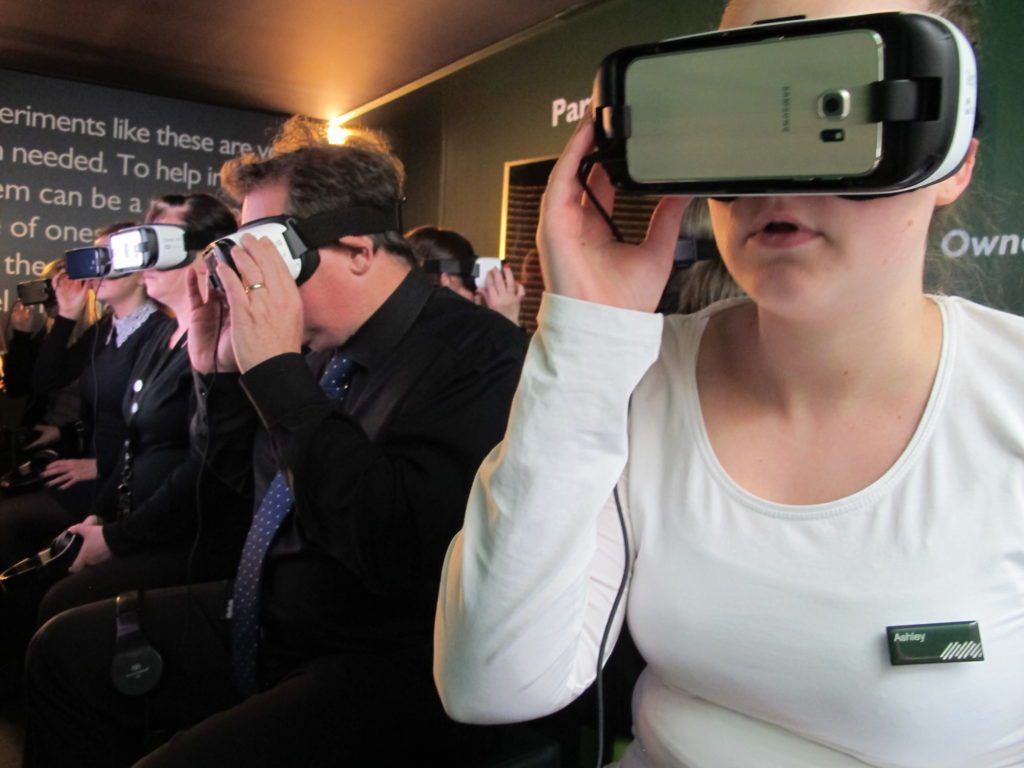In 1987, Nobel Prize-winning economist Robert Solow famously quipped, “You can see the computer age everywhere except in the productivity statistics.” This sentiment is strikingly relevant to the current state of virtual reality (VR) training. A new-gen reality-bending simulation can provide immersive experiences where students and instructors interact seamlessly as lifelike avatars, collaborating and learning together in their day-to-day work contexts.
But most learning organizations are merely dipping their toes in the shallow end of the VR pool, testing the waters with small-scale pilots instead of taking the plunge with enterprise-wide VR transformation that drives 10x productivity improvements. Unlocking the true potential of VR demands significant investments, and learning leaders must construct a strong business case to illustrate the value of such a commitment.
Identify strategic VR use cases
The business case needs to tackle a strategic business problem that capitalizes on the unique capabilities of VR and enlist an executive sponsor to champion the project. The sweet spot of current VR tech is spatial hands-on training for tasks that are too dangerous, expensive, inconvenient or simply impossible to practice in real life – think safety, equipment, technical service, operations, logistics, manufacturing, emergency response and healthcare.
Cost savings
Upon identifying the use case, the business value of the immersive learning solution has to be demonstrated. Cost savings from reduced instructor time, travel, training facilities, and materials are easy to measure. Fewer operational disruptions can be another big cost saving as many companies are forced to halt plant operations or inconvenience customers during in-store training sessions. Student time savings is yet another underappreciated benefit of VR; the equivalent of a full day’s training can be packed in just a few hours in the headset.
Performance improvement
While cost savings are easy to measure, improved work performance represents the more substantial profit impact. Upskilling with VR can reduce accident rates, boost sales and improve productivity. A more elusive yet crucial metric involves fostering enhanced employee engagement, which in turn reduces turnover and strengthens talent acquisition efforts. Natural field experiments and control groups can assess the effect of VR training on work performance and its correlation to business outcomes.
Investment cost
The investment denominator of the ROI equation includes content development and internal resources. VR development is a complex and iterative process involving a team of 3D artists, game developers and learning designers. Most learning organizations contract with companies like mine, the Gronstedt Group, to custom-develop pixelated versions of their workplaces and products. This investment can be amortized for years to come.
While it’s essential to consider the in-house expenses associated with the development and implementation of a VR program, the hardware and platform costs are relatively minimal. Businesses can leverage a limited number of shared headsets. The market-dominating $400 Quest2 is supported by a robust new business platform from Meta and Microsoft that can integrate reporting to any LMS (contact me to discuss our experiences with the closed beta of Quest for Business).
Cross-functional, cross-platform
The business case for VR extends far beyond training. The same investment in a high-fidelity workplace can be leveraged for product strategies, operations, customer relations, marketing and recruitment. Our clients bring their VR simulations to recruitment fairs and marketing events, deploying them across a range of platforms, from mobile devices to large touchscreens at exhibitions. The enterprise metaverse is a versatile cross-platform asset, offering numerous applications across the organization.
Let me know if we can meet up for a web conference or in our demo app on your Meta Quest headset to discuss how the Gronstedt Group can help develop a business case for your organization and bring it to (virtual) reality.
Quelle:








